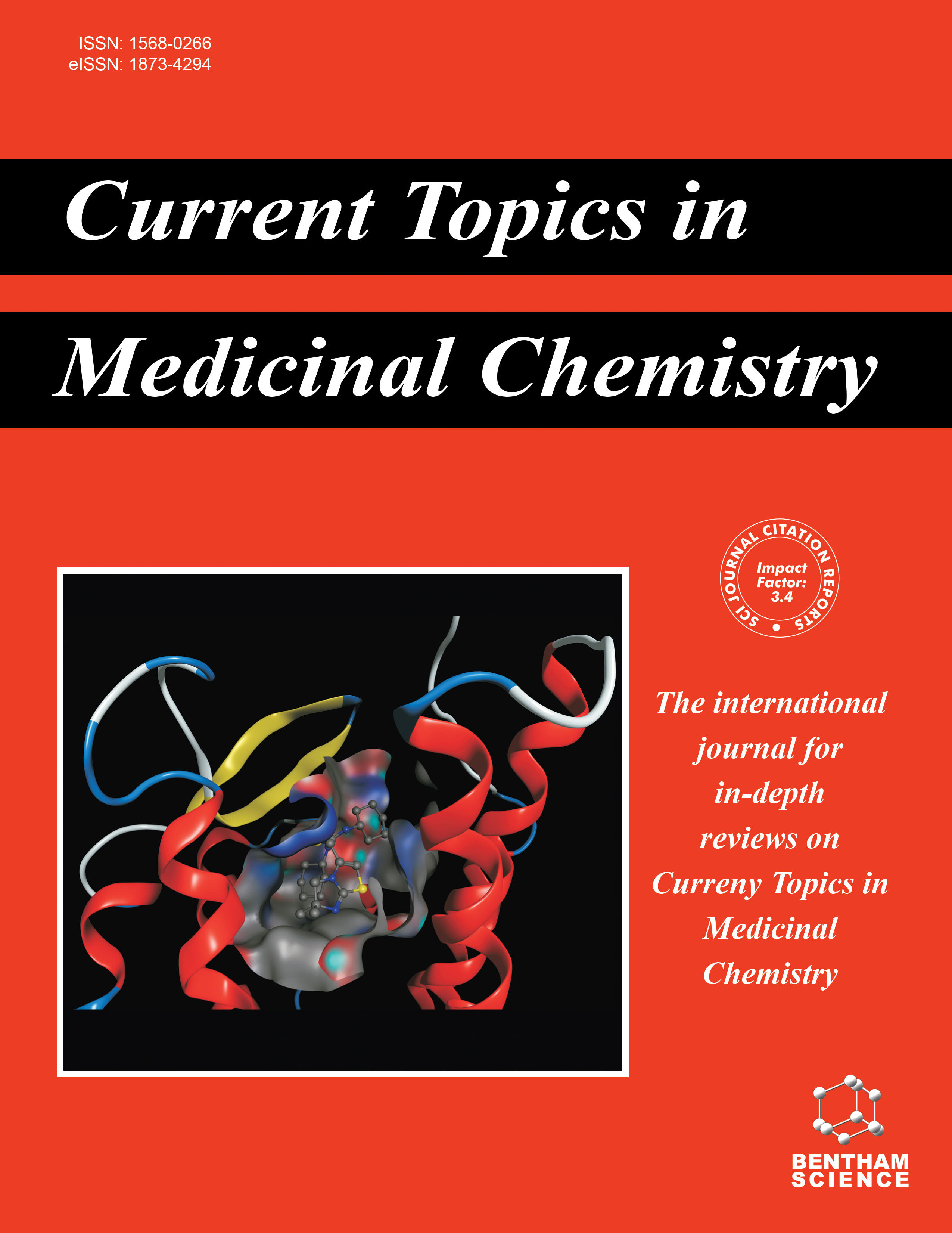- Home
- A-Z Publications
- Current Topics in Medicinal Chemistry
- Previous Issues
- Volume 12, Issue 17, 2012
Current Topics in Medicinal Chemistry - Volume 12, Issue 17, 2012
Volume 12, Issue 17, 2012
-
-
Compound Activity Prediction Using Models of Binding Pockets or Ligand Properties in 3D
More LessAuthors: Irina Kufareva, Yu-Chen Chen, Andrey V. Ilatovskiy and Ruben AbagyanTransient interactions of endogenous and exogenous small molecules with flexible binding sites in proteins or macromolecular assemblies play a critical role in all biological processes. Current advances in high-resolution protein structure determination, database development, and docking methodology make it possible to design three-dimensional models for prediction of such interactions with increasing accuracy and speci Read More
-
-
-
Drug Repurposing in Chemical Genomics: Can We Learn from the Past to Improve the Future?
More LessMore needs to be done by the private sector to optimize the drug discovery and development pipeline. In addition, significant efforts should also be focused on the understanding of mechanism of diseases, on the characterization of unexplored biochemical pathways and on the validation of new protein targets. Chemical genomics, which uses chemical probes to help understand the complexity of biological systems at the gene an Read More
-
-
-
New Insights in Protein Kinase Conformational Dynamics
More LessAuthors: Giorgio Saladino and Francesco Luigi GervasioA significant portion of recent drug development efforts has been focused on protein kinases. More than a hundred different compounds are currently under clinical trials and nearly 30% of all the scientific articles in drug discovery are on protein kinase inhibitors. Protein kinases are very flexible targets and undergo significant conformational changes upon activation and during the catalytic cycle. This flexibility can be expl Read More
-
-
-
QSARs, Data and Error in the Modern Age of Drug Discovery
More LessAuthors: Christian Kramer and Richard LewisThe legacy of the advances made in high-throughput screening (HTS) in the 1990's is a large source of public data from which models can be derived using QSAR methods. This paper will examine the integrity of these public data sources and the implications for model building.
-
-
-
Target Prediction of Small Molecules with Information of Key Molecular Interactions
More LessThe knowledge about to which biomolecules a small molecule binds is highly valuable in the drug development process. Although analytical methods to dissect ligand-binding proteome have made substantial progress in the past decades, it is generally too costly, if not infeasible, to know where a small molecule binds at very high resolution. Computational prediction of binding partners of small chemical molecules has bec Read More
-
-
-
Enzyme Informatics
More LessOver the last 50 years, sequencing, structural biology and bioinformatics have completely revolutionised biomolecular science, with millions of sequences and tens of thousands of three dimensional structures becoming available. The bioinformatics of enzymes is well served by, mostly free, online databases. BRENDA describes the chemistry, substrate specificity, kinetics, preparation and biological sources of enzymes, while Read More
-
-
-
New Insights in Atom-Atom Interactions for Future Drug Design
More LessIn silico medicinal chemistry investigates molecular systems that are too large to be tackled by medium to high level ab initio quantum chemistry. Only atomistic force fields can deliver rapid computation of energy required in sampling the many conformational and orientational degrees of freedom of a ligand within a protein pocket. However, the predictive reliability of a force field critically depends on the quality and realis Read More
-
-
-
Computational Tools for In Silico Fragment-Based Drug Design
More LessAuthors: Jeremie Mortier, Christin Rakers, Raphael Frederick and Gerhard WolberFragment-based strategy in drug design involves the initial discovery of low-molecular mass molecules. Owing to their small-size, fragments are molecular tools to probe specific sub-pockets within a protein active site. Once their interaction within the enzyme cavity is clearly understood and experimentally validated, they represent a unique opportunity to design potent and efficient larger compounds. Computer-aided method Read More
-
Volumes & issues
-
Volume 25 (2025)
-
Volume 24 (2024)
-
Volume 23 (2023)
-
Volume 22 (2022)
-
Volume 21 (2021)
-
Volume 20 (2020)
-
Volume 19 (2019)
-
Volume 18 (2018)
-
Volume 17 (2017)
-
Volume 16 (2016)
-
Volume 15 (2015)
-
Volume 14 (2014)
-
Volume 13 (2013)
-
Volume 12 (2012)
-
Volume 11 (2011)
-
Volume 10 (2010)
-
Volume 9 (2009)
-
Volume 8 (2008)
-
Volume 7 (2007)
-
Volume 6 (2006)
-
Volume 5 (2005)
-
Volume 4 (2004)
-
Volume 3 (2003)
-
Volume 2 (2002)
-
Volume 1 (2001)
Most Read This Month
Article
content/journals/ctmc
Journal
10
5
false
en


